Last Updated on September 4, 2023 by Linda Richard
How much exercise does a lab need? Labrador Retrievers are sturdy, strong dogs. Their proportions almost resemble a square, they have a dense body and strong paws.
The maximum height of the male dog is 60 cm, due to which Labradors are referred to as dogs of medium size, but due to their powerful build, they can visually seem much larger than they are. Dogs bred for field trials are usually taller and somewhat leaner in build.
Labrador Retrievers are easily recognized by their broad head shape, floppy ears, and large expressive eyes. Two distinctive features of the Labrador Retriever are the rather short two-layer waterproof coat and the so-called “otter tail”.
Table of Contents
Labrador’s physical needs
Labradors easily adapt to the amount of exercise you can provide, not depending on the type of their breed, be it a Lab cross retriever or a yellow Lab. However, keep in mind a reasonable requirement: an adult dog requires more than an hour of exercise to keep your dog healthy.

They like fairly long walks with the ability to run and play without a leash. They love to look for objects and water, so take care of safety if there are bodies of water nearby. They tend to also gain weight and excess weight. This is often due to a lack of dog exercise as well as a love of food. This article will tell you about how much exercise does a Labrador need.
Adult Labrador Retriever
How much exercise does a Labrador need depends on its age. Regular physical activity is important for adult Labradors to keep them in good shape both physically and mentally. It’s important to engage them in activities that challenge their muscles, promote cardiovascular fitness, and stimulate their senses.
Aiming for about an hour of exercise or even two hours per day helps meet their energy needs and prevents them from becoming sedentary or overweight.
Walking on a leash
Walking on a leash is a common form of regular exercise for Labradors. It provides them with an opportunity to explore their surroundings, engage their senses, and get some low-impact cardiovascular activity.
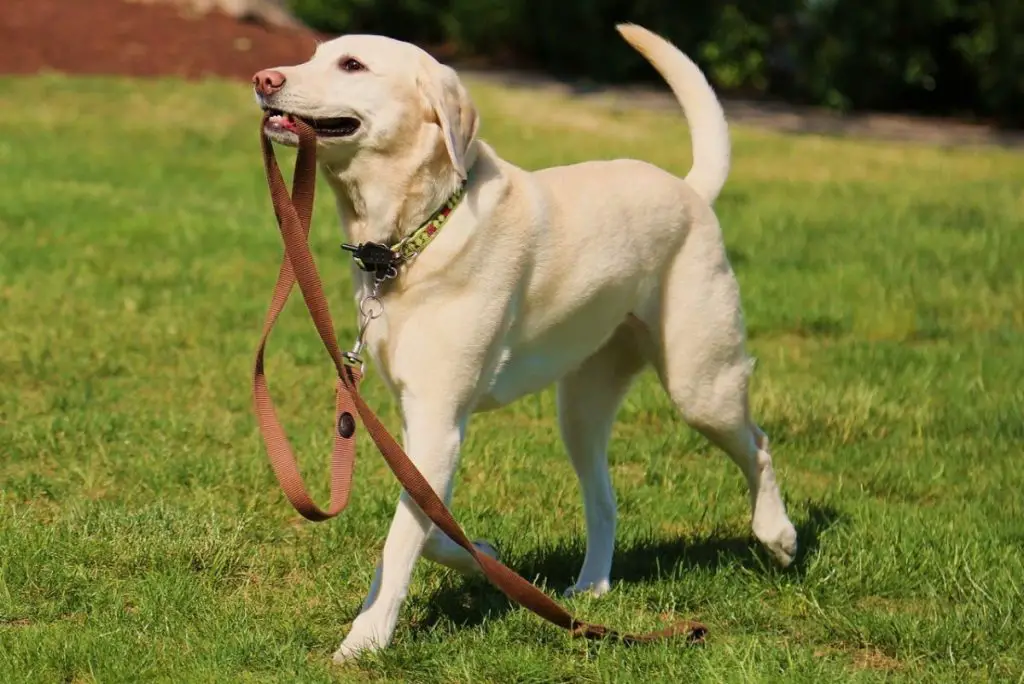
While a leisurely walk is beneficial, incorporating more vigorous exercise, brisk walking, or even occasional jogging can increase the intensity and provide a greater challenge for their muscles and cardiovascular system.
Fetching and retrieving
Grown Labrador has a natural love for fetching and retrieving, making activities like playing with a ball or frisbee at a dog park an excellent choice for exercise.
These games allow adult dogs to engage in quick sprints, agility movements, and repetitive bursts of energy.
Throwing a ball or playing fetch in an open space can help them burn off pent-up energy.
Mental stimulation
- In addition to physical exercise, mental stimulation is essential for Labradors to keep their minds sharp and prevent boredom. Incorporating activities like behavioral training, puzzle toys, or interactive games with agility training can help engage their intelligence and provide mental exercise alongside physical activity.
- It’s important to consider the specific needs and limitations of your Labrador when determining the duration and intensity of their physical activity. Factors such as age, weight, overall health, and any underlying medical conditions should be taken into account, as a senior Labrador Retriever requires less training, as well as an overweight dog.
Old Labrador Retrievers
An old Labrador Retriever, also known as a senior Labrador, deserve special attention and care in their golden years. An old Labrador Retriever may experience certain age-related changes, such as decreased energy levels, arthritis, and potentially cognitive decline. It is crucial to provide them with a comfortable and supportive environment, including soft bedding and easy access to food and water.

Adjusting their exercise plan is also necessary to accommodate their changing physical abilities.
While they may still enjoy gentle walks, it is important to be mindful of their energy levels.
Low-impact activities, such as swimming or short and controlled play sessions, can help keep them active and engaged without putting excessive strain on their joints. It’s important to listen to their cues and provide opportunities for rest as needed.
How much exercise does a Labrador puppy need?
A Lab puppy is a bundle of energy and enthusiasm. They have a natural curiosity and desire to explore the world around them. Regular physical activity is crucial for their healthy growth and development, but it’s important to provide appropriate exercise that takes into account their young age and still-developing bodies.

Labrador puppies have a lot of energy to burn, and it’s important to channel that energy into activities that are safe and suitable for their age. Engaging them in playtime is a fantastic way to provide both physical exercise and mental stimulation. Play sessions can include games of fetch, tug-of-war, or chasing toys.
These activities allow them to use their muscles, develop coordination, and practice their natural retrieving instincts. However, it’s essential to monitor their play and ensure it doesn’t become too rough or overstimulating, as this can lead to injuries or excessive strain on their joints.
Playtime
Playtime is crucial for a Labrador puppy’s physical and mental stimulation, as they do not need a structured exercise routine. Interactive play with appropriate toys, such as balls or chew toys or with other dogs, allows them to engage their instincts and burn off pent-up energy.

This type of activity promotes coordination, and agility, and helps build muscle strength. However, it’s important to supervise playtime to ensure the Lab puppy doesn’t become overly excited or engage in rough play that may lead to injuries.
Short walks
Short walks are beneficial for Labrador puppies as they provide opportunities for socialization with other dogs, exposure to different environments, and mental stimulation. However, care should be taken to avoid excessive walking or strenuous exercise on hard surfaces, as this can put undue stress on their growing joints.
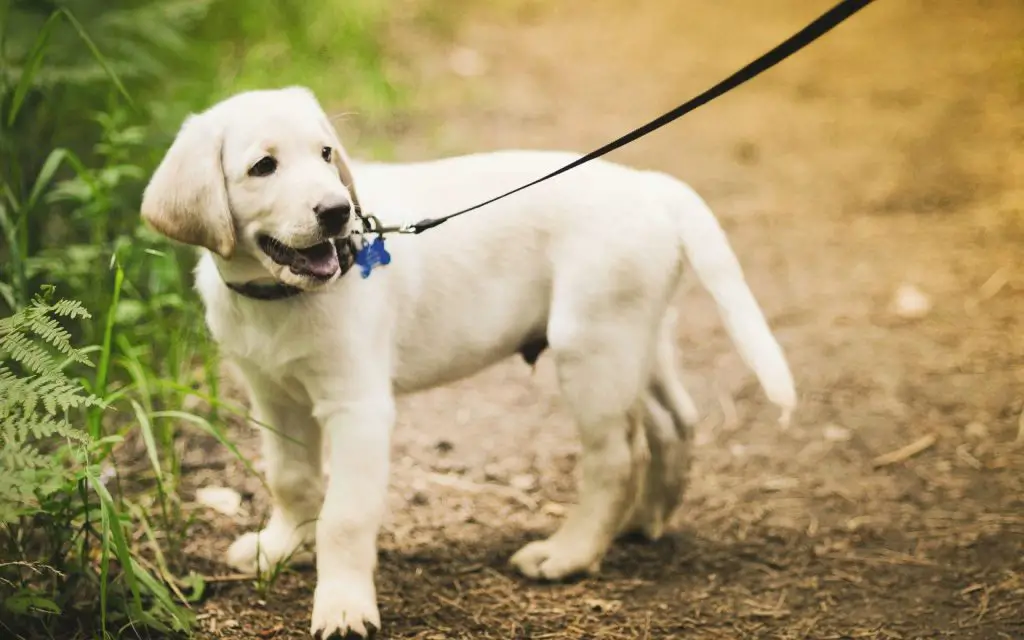
Gradually increasing the duration and intensity of walks, as well as introducing more exercise for more muscular and older dogs is advisable.
Behavioral training
Skill- and behavior-oriented training sessions are excellent for your young dog. Training not only stimulates their minds but also helps establish boundaries, reinforce positive behaviors, and develop a strong bond with their owner.
Basic behavioral training, such as sit, stay, and recall, can be introduced early on and gradually built upon as the puppy grows.
It’s important to approach training and daily exercise with moderation and common sense. Overexerting a Labrador puppy can lead to joint problems, injuries, or long-term issues with their musculoskeletal system.
Adaptivity and daily exercise plan
As the puppy grows, it’s important to adapt the daily exercise needs to its changing needs and energy levels. Regular monitoring of their weight, muscle tone, and overall behavior can help ensure that the physical activities are appropriate and promote their healthy development.

Labrador puppies require regular physical activity to support their growth and development. Providing a variety of dosages of a moderate amount of exercise, including playtime, short walks, and skill-oriented training, help promote their physical and mental well-being.
It’s important to strike a balance and avoid over-exercise, gradually increasing the intensity of activities as they mature.
Types of regular exercise
If we answered how much exercise is needed, now it is time to address the types of exercises. This gradual introduction of Labrador exercise ideas is crucial to prevent overexertion and potential injuries, especially in Labrador puppies.
Their growing bodies are still developing and may be more susceptible to strain or damage if subjected to excessive physical stress too soon.
When starting a training regimen for a Labrador retriever, it’s important to consider their age, individual capabilities, and overall health. Beginning with short and low-intensity sessions allows the puppy’s body to gradually adapt and build strength over time. This gradual approach helps prevent physical stress and promotes good health development.
Walking
One great exercise for everyday training of a Labrador retriever is the “step” or “pace” walk. This exercise involves the owner walking briskly while the puppy trots beside them at a leisurely pace.
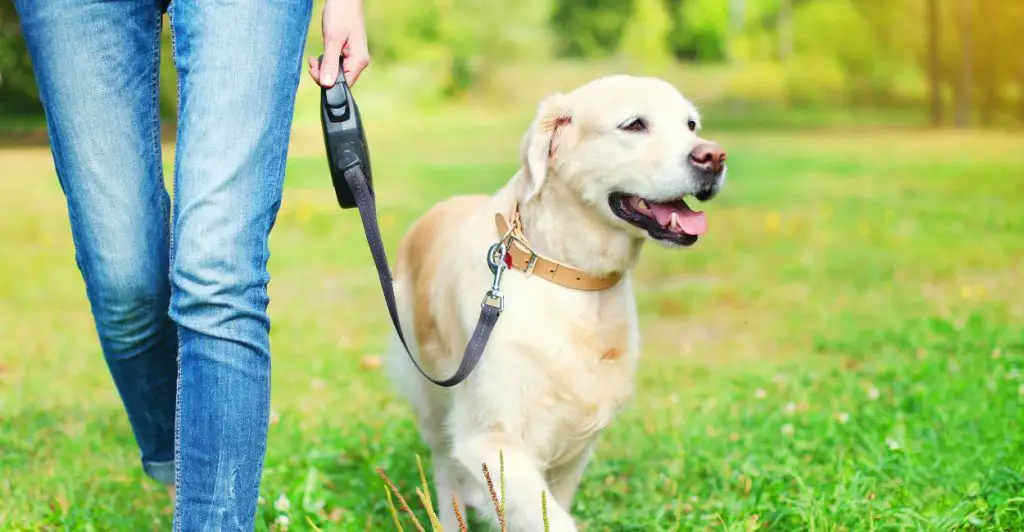
The purpose of this exercise is to encourage the Labrador retriever to maintain a consistent gait and strengthen their back muscles.
When practicing the step walk, it is preferable to avoid walking on hard surfaces such as asphalt. Instead, gentle walking, on solid ground or even better, on gravel, can provide additional benefits. The uneven terrain of gravel helps to engage the puppy’s muscles and promote balance, which contributes to overall physical development.
Duration of walking
The step walk should be practiced for a minimum of 10-15 minutes during each walk session. This duration allows the puppy to engage in sustained physical activity while gradually building stamina.
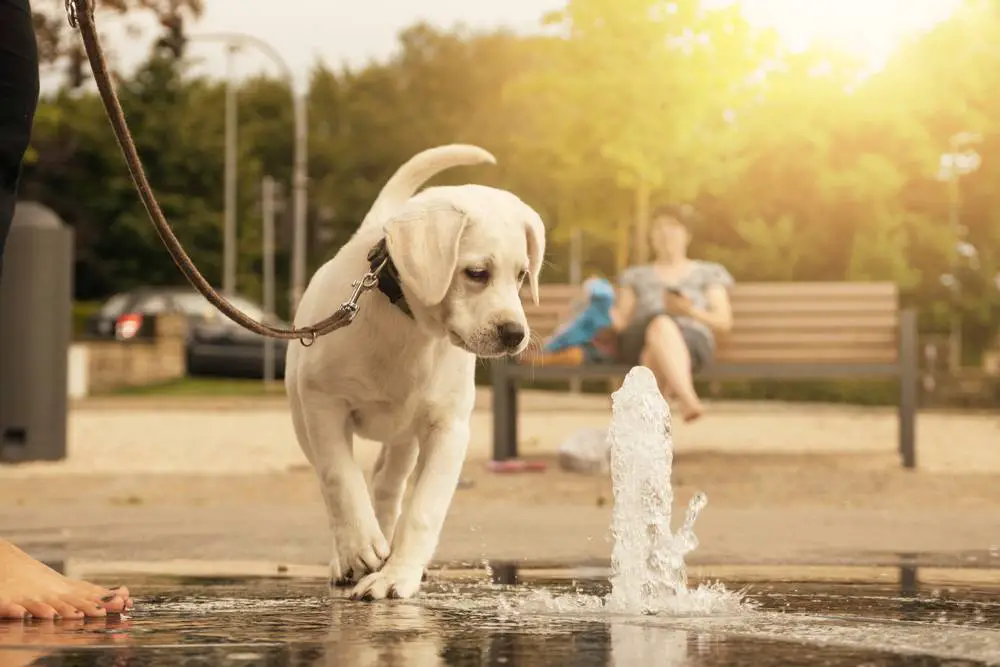
Over time, as the puppy grows and develops, the duration of the step walk can be increased as long as they are comfortable and not showing signs of exhaustion or strain.
Trotting
Another training gait is the trot. To make your puppy comfortable moving, you must train him to trot at different speeds, choosing the pace at which the dog shows the most concentration.
During training we specially make Labrador retriever move either at a slow pace, suppressing his attempts to trot, or at a very fast trot, on the verge of breaking into a canter. During the movement, it is desirable that the leash was sagging.
Watch the condition of the dog during the movement, and consider the weather conditions (training should be carried out in any weather but with adjustments). Don’t forget to make short accelerations – during such accelerations at maximum speed, the dog’s body produces special substances that help strengthen the immune system.
Swimming
Swimming is the most important exercise available for dogs of all breeds, and if your Labrador Retriever loves to swim, it should be welcomed. It is an ideal exercise for the Labrador as swimming works the dog’s body and limbs in the same mode as trotting, but there is no stress on the ligaments.
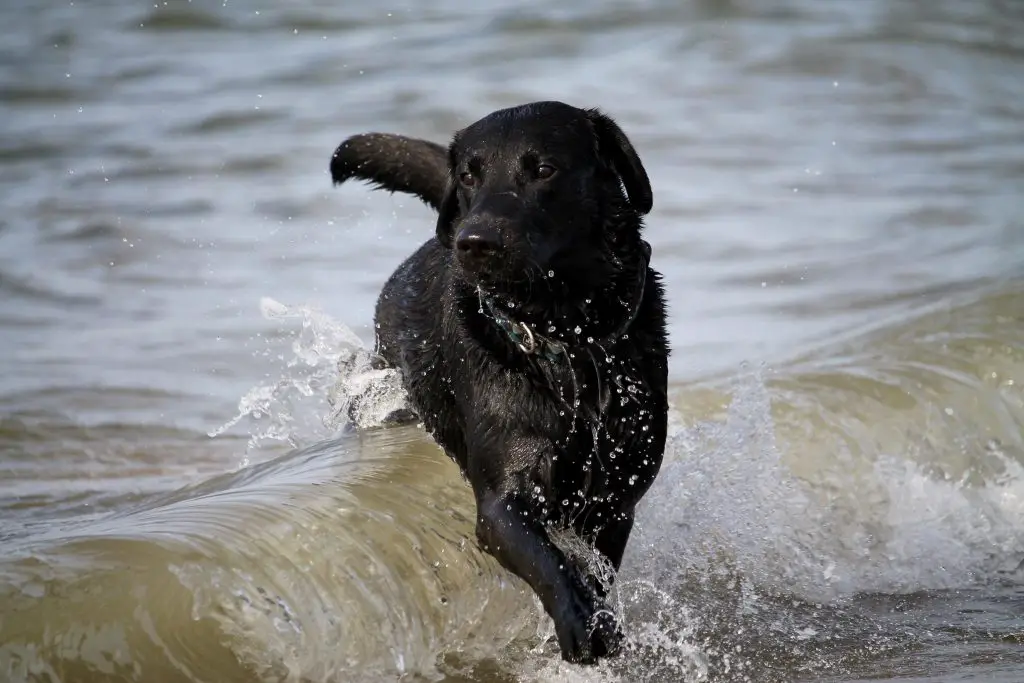
It is also very useful to move in shallow water, with the surface of the water should be at the level of the dog’s elbows. Swimming is very useful both for the development of the dog’s muscles and for the development of the respiratory system. It should be noted that an overheated Labrador Retriever should not be sent into the water right away.
Conclusion
In conclusion, providing adequate exercise for Labrador Retrievers is essential for their overall health and well-being.
Healthy adult Labrador Retrievers typically require around one hour of exercise per day, which can include walking, jogging, playing fetch, and swimming. Mental stimulation through obedience training, puzzle toys, and interactive games should also be incorporated to keep their minds sharp.
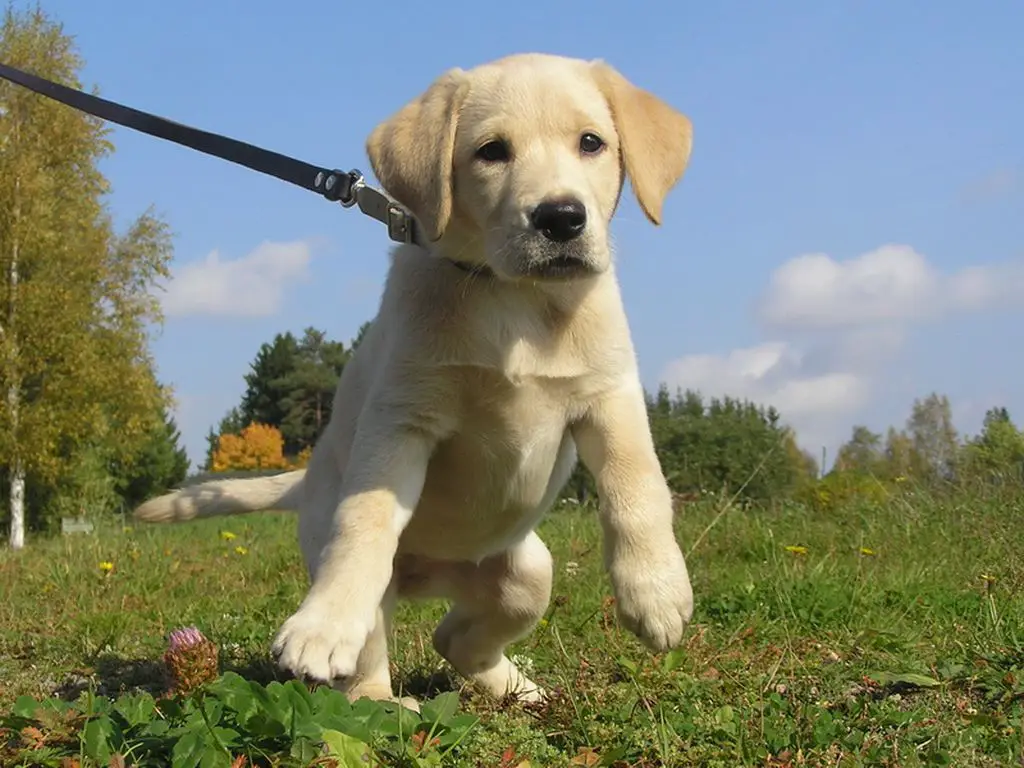
Labrador puppies have higher energy levels and should engage in regular playtime and short walks. Care should be taken to avoid vigorous exercise on their developing joints and bones, gradually increasing the intensity and duration of exercise as they grow.
The “step” or “pace” walk is a beneficial exercise that strengthens their back muscles, while swimming provides a low-impact full-body workout.
It’s important to approach exercise with moderation, gradually introducing activities and monitoring the Labrador’s response. Consulting with professionals, such as veterinarians or dog trainers, can provide guidance tailored to the individual needs of a Labrador Retriever at different life stages.
FAQ
Is walking enough exercise for a Labrador?
Walking alone may not be enough exercise for a Labrador. While walking provides some physical activity and mental stimulation, Labradors are generally energetic dogs that require more than just a stroll.
Running is a sufficient exercise at first for Labradors as it allows them to stretch their legs, build endurance, and burn off excessive energy.
Playing fetch is another favorite activity of Labradors. It not only satisfies their natural retrieving instincts but also provides an opportunity for intense bursts of running and quick sprints.
Engaging Labradors in interactive games is crucial for their overall well-being. This can include hide-and-seek, puzzle toys, or training that challenge their mental capabilities. Swimming is another fantastic exercise option for Labradors.
Is 2 walks a day enough for a Labrador?
While two walks a day can provide a baseline of exercise for Labradors, it’s important to recognize that they are active dogs and an energetic breed that often requires more than just walks. Labradors have a reputation for their love of play and activity, and incorporating additional activities into their routine can contribute to their overall well-being.
Playtime is a vital component of a Labrador’s exercise routine. This can involve playing with toys, engaging in tug-of-war, or participating in interactive games that stimulate their instincts.
Play sessions not only provide exercise but also mental stimulation, as Labradors enjoy problem-solving and using their intelligence to engage in playful activities.
Mental stimulation is just as important as physical exercise for Labradors. They are intelligent dogs that thrive when mentally challenged. Including activities such as puzzle toys, obedience training, or scent work can help keep their minds sharp and prevent boredom, which can lead to destructive behaviors.
How often should a Labrador be walked?
The ideal frequency of walks for Labradors is typically at least once or twice a day. However, it’s important to consider that the specific needs of Labradors can vary depending on factors such as age, other health problems, and energy level.
Younger Labradors, particularly Lab puppies, tend to have higher energy levels and shorter attention spans. They may require more frequent walks or an increased amount of exercise sessions throughout the day to help burn off excess energy and keep them mentally stimulated.
Adult Labradors also benefit from regular walks or light exercise, but the duration and intensity can vary based on their energy level and overall health. Some Labradors may be content with one or two longer walks per day, while others may require additional shorter training.
What is the 5-minute rule for Labrador exercise?
The “5-minute rule” is a commonly recommended guideline for exercising Labrador puppies. It provides a framework for ensuring that puppies receive appropriate activity while taking into account their growing bodies and the need to prevent excessive exercise.
The rule suggests limiting exercises to 5 minutes per month of age, up to twice a day. For example, a 3-month-old Labrador puppy would have exercises of up to 15 minutes, twice a day.
The rationale behind the 5-minute rule lies in the fact that Labrador puppies undergo rapid growth during their early months. Their bones, joints, and muscle mass are still maturing and may be more susceptible to damage or strain if subjected to excessive physical stress.


1 thought on “How much exercise does a Lab need: Labrador guide”
Comments are closed.